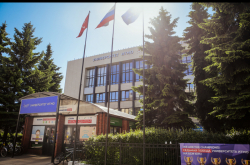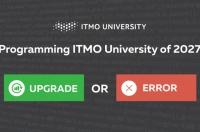The QS BRICS ranking is published every year since 2014 and is part of the series of regional rankings made by the Quacqarelli Symonds Ltd ranking agency. This year’s ranking now includes 100 more universities, presenting a Top-400 of universities in Brazil, Russia, India, China, and South Africa.
The methodology has not changed from last year’s ranking. The QS BRICS ranking is somewhat different from the main QS World University Rankings and includes eight indicators, each with a percentage value. These are: academic reputation within the past five years (30%), employer reputation within the past five years (20%), faculty-to-student ratio (20%), number of papers per academic staff member (10%), number of staff members with PhD status (10%), number of citations per paper (5%), the share of international students (2.5%) and the share of international staff (2.5%).
Up by 11 positions
ITMO University holds the 64th place in this year’s ranking (last year ITMO was ranked 75th). Three factors played a major role in this leap: its reputation, number of papers per academic staff member, and the share of international staff. ITMO University improved its performance in regards to several criteria, including academic and employer reputation, the number of PhD holders among its staff, the number of publications, the number of international staff, and the ratio of staff to students.
ITMO University’s indicators in the number of publications and citations have continued to grow in the past three years. This year, the number of citations (self-citations excluded) increased twofold compared to last year’s.
Just like last year, ITMO University’s best indicator is the number of international students; it is ranked 27th of all BRICS universities by the number of international students. A total of 101 Russian universities were evaluated for the ranking, of which ten are included in the Top-50.

All 5-100 participants in QS BRICS for the first time
This year’s QS BRICS ranking is notable for its inclusion of all participating universities of the 5-100 Russian Academic Excellence Project, with 15 of them placed in the Top-100. The Sechenov First Moscow State Medical University (115th) and the University of Tyumen (301-350) have made their debut in the ranking.
Of all Russian universities, the top performers this year are Moscow State University (6th) and the St. Petersburg State University (11th); right behind them are three universities of Project 5-100: Novosibirsk State University (12th), Tomsk State University (19th) and Moscow Institute of Physics and Technology (21st).
The complete ranking can be seen here.





